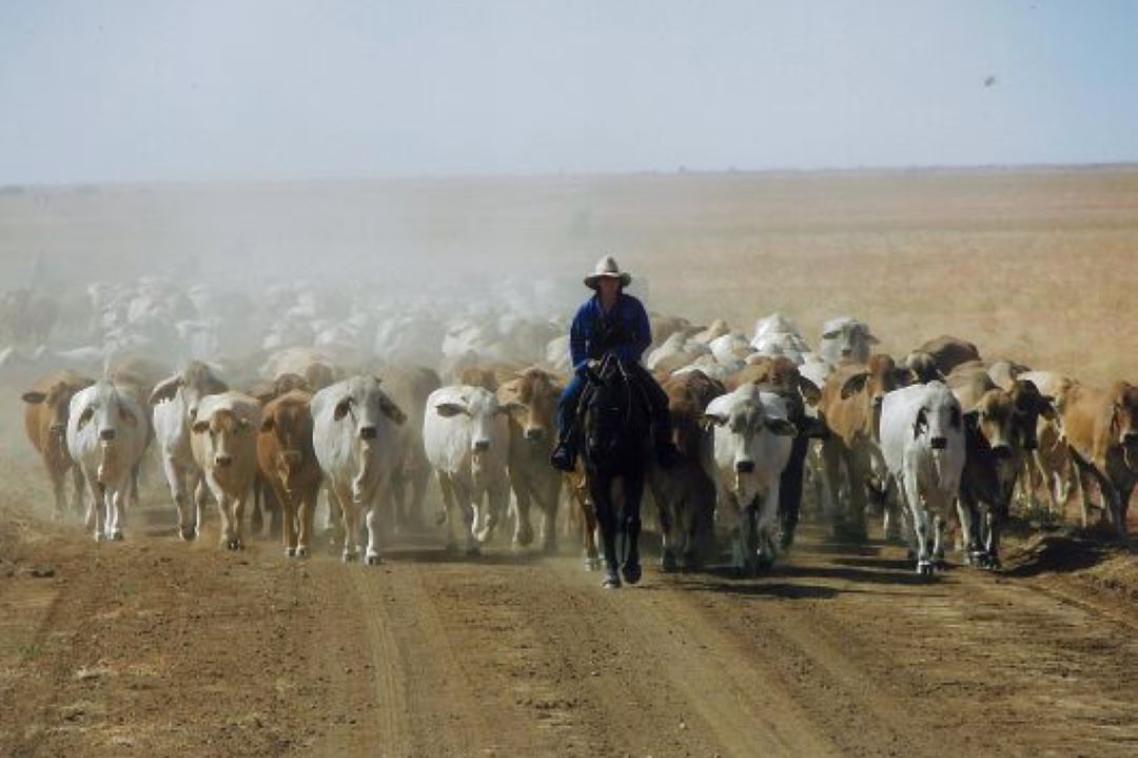Tail hair the key to predicting performance in cattle

(Photo credit: University of Queensland. )
Plucking a single tail hair could allow beef producers to quickly and easily identify the most efficient cattle, according to University of Queensland research.
The study found measuring nitrogen levels in tail hair could identify cattle with superior nitrogen efficiency and better responses to urea supplementation.
Lead author and Queensland Alliance for Agriculture and Food Innovation PhD candidate Brandon Fraser said the results would help producers increase profit and make the most of resources.
“We want to be able to identify the animals that will gain weight better and faster with fewer supplements,” Mr Fraser said.
“This is particularly relevant for cattle in northern Australia where performance varies substantially in the dry season when the grass is low quality.
“If producers can select the top 25 per cent most efficient, they can keep them in the herd and sell the rest.
“Eventually, the selected heifers will produce more efficient calves and we will get more bang for our buck in future generations.
“Producing beef with fewer resources means it's cheaper for the farmer and ultimately the consumer.”
Previous research showed cattle who lost more nitrogen had impacted growth rates, but quantifying losses is time-consuming in large herds.
The study used tail hair to measure the nitrogen levels of Brahman steers fed different diets including a medium-quality hay diet, and another of a hay with supplements.
“This study shows there is an opportunity to measure efficiency in a non-invasive way, which doesn’t require special treatment,” Mr Fraser said.
Co-author Associate Professor Luis Prada e Silva said cattle with the ability to preserve nitrogen grew better.
“Good genetics remain good genetics with or without the supplement,” Dr Prada e Silva said.
“The big picture here is to accept the efficiency of animals in the north depends on their ability to preserve nitrogen.
“If we accept that concept, this could be a game changer for targeted nutrition in northern beef systems.
“What’s needed now is for genetic companies or peak bodies in the industry to create a way to give producers the ability to better understand their cattle’s genetics
“That could be someone commercialising tail hair analysis or as we’re doing with genetic companies, finding DNA markers so producers don’t have to wait three generations to know if the cow is good.
“From a science point of view, we need to incorporate traits like fertility, resilience and heat stress into a genetic analysis.
The research was published in Animal Production Science.
The Queensland Alliance for Agriculture and Food Innovation is a research institute at The University of Queensland established with and supported by the Department of Primary Industries.
Collaboration and acknowledgements
The study was funded by Meat & Livestock Australia.Topics
Related articles

Finding efficiencies in creating jet fuel from plant waste

Peptides to prime plant defence against viruses in vegetables
Media contact
QAAFI Communications, Natalie MacGregor
n.macgregor@uq.edu.au
+61 409 135 651
